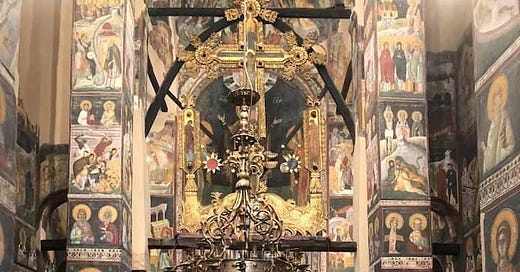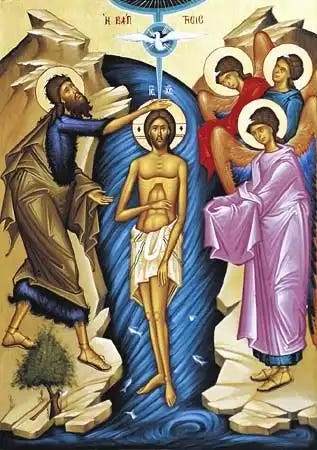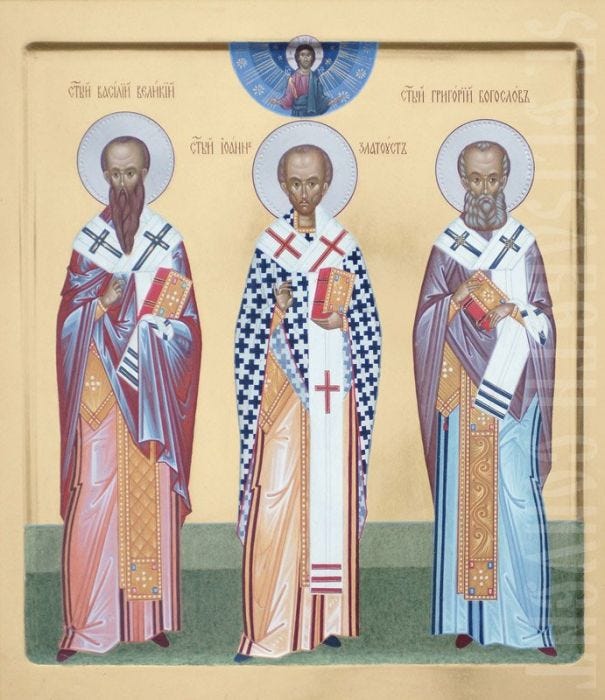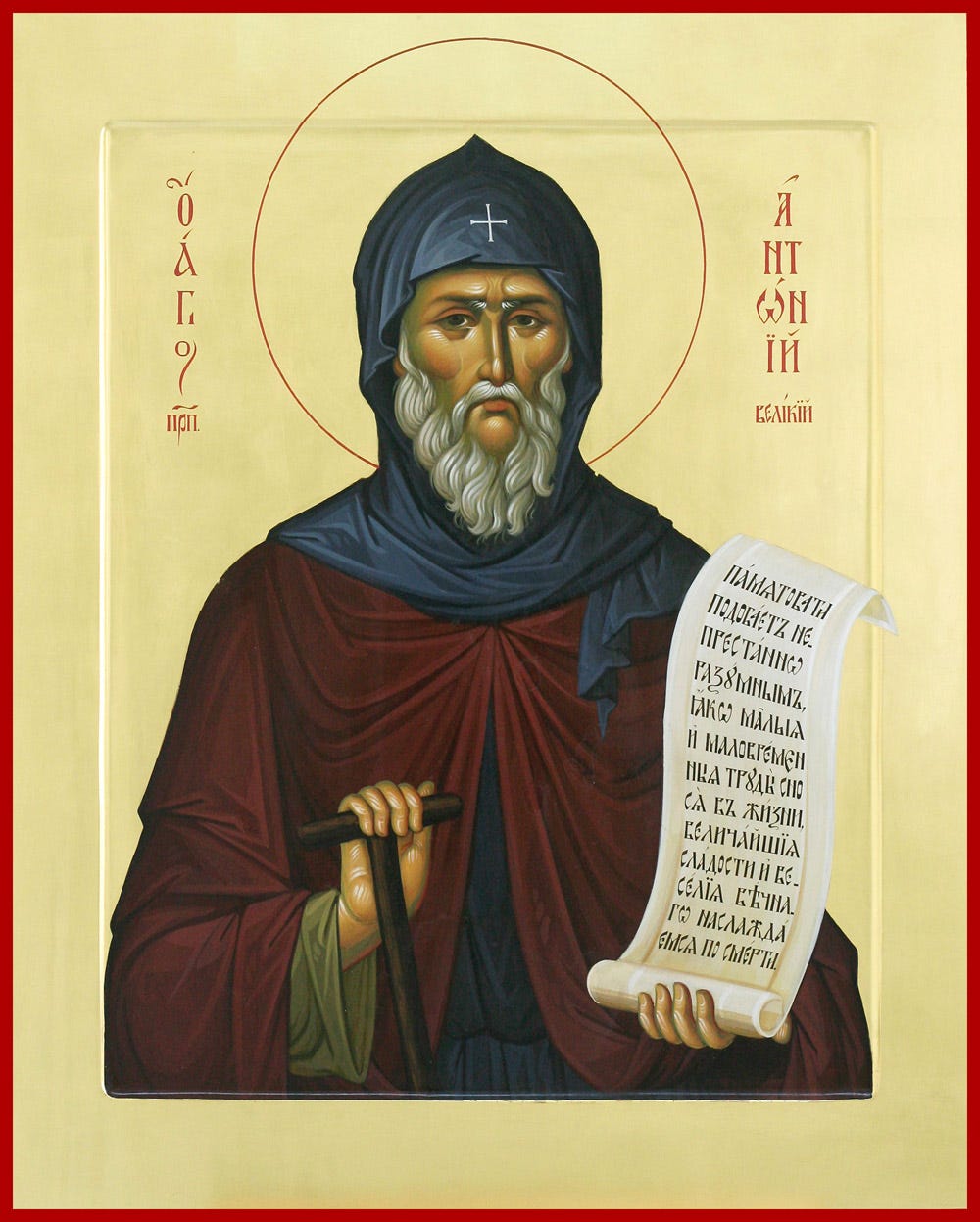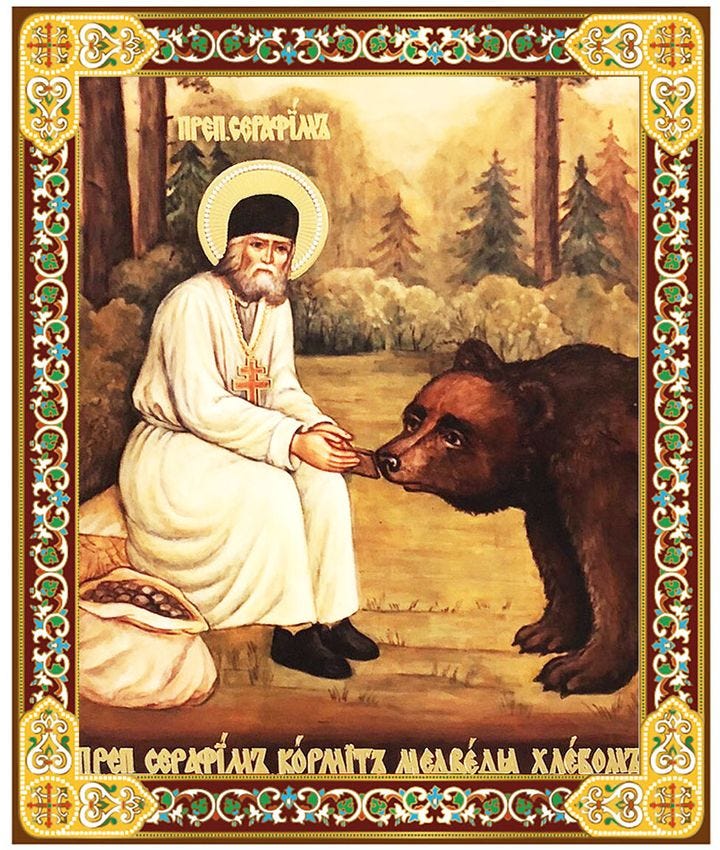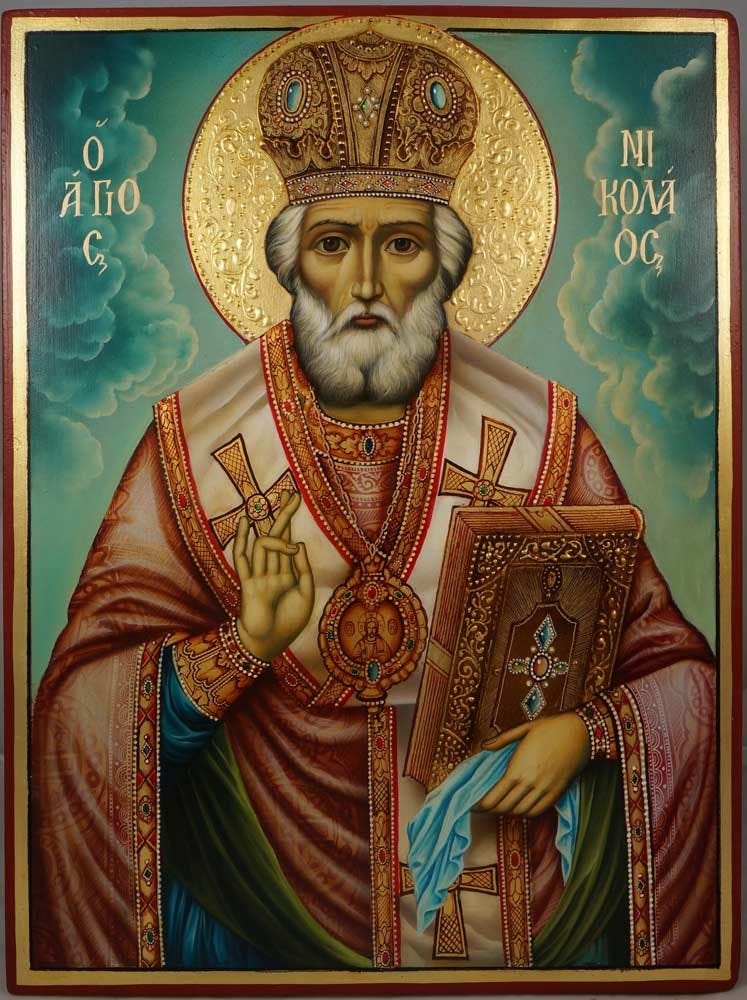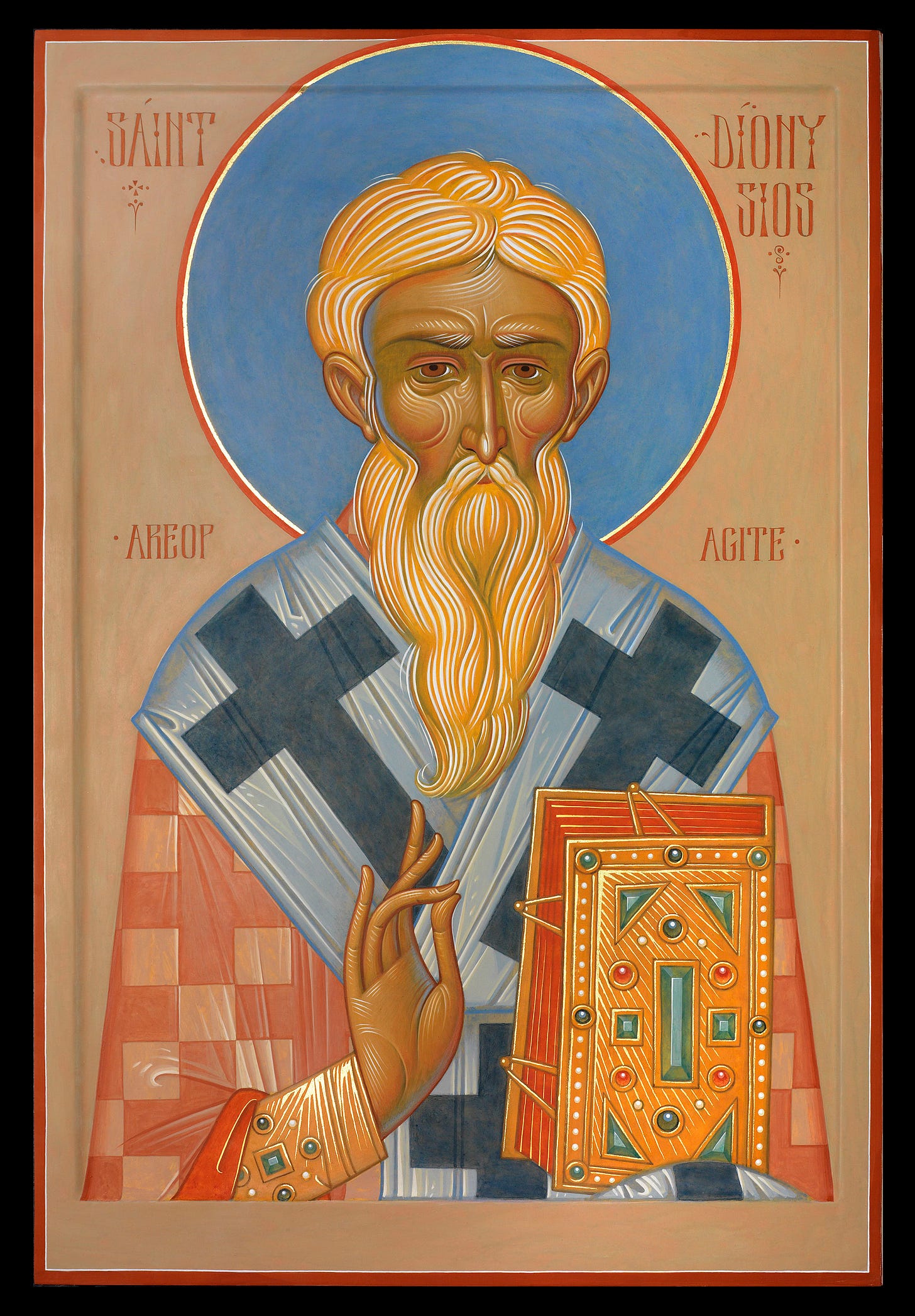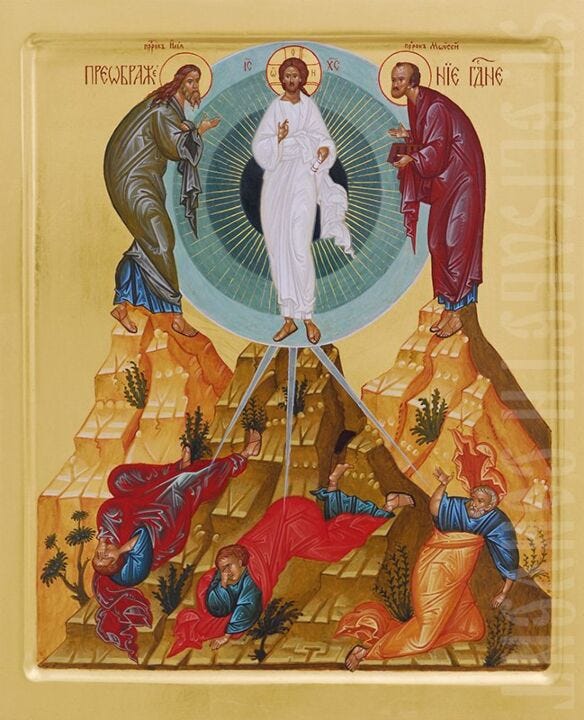DISCLAIMER
The catechism lessons series is prepared by me (Qai) of Orthodox Shahada. I am not ordained clergy. However, I have the explicit blessing of my spiritual father (who has been a priest in the ROCOR jurisdiction for 40+ years) to conduct catechism classes. The lessons are delivered in person at the parish level and are now being made available online in the hope that they will benefit others.
In the previous lesson, we looked at the importance of the lives of the Saints and how we are to engage with them.
In this lesson, we aim to develop a basic understanding of Icons as Scripture.
Most immediately noticeable upon entering Orthodox Churches and homes are Icons. For those unfamiliar with Icons, they may think them to be “artwork” serving a decorative purpose, or blasphemously consider them to be “idolatrous” depictions despite numerous instances of Iconography in the Bible (e.g., brazen serpent, cherubim). For the Orthodox faithful, Icons are theological, necessary, and venerated. They are windows into the Heavenly realm.
The Orthodox notion of “Scripture” is far more encompassing than what most people think of when they hear the word, which they typically understand as just a catch-all term for the books of the Bible taken as a collective.
Icons are also considered Scripture within the Orthodox tradition. They teach Biblical truths and theology. Moreover, it is Orthodox practice to refer to the production of Icons as being “written” as one would write a book, and when one looks upon an Icon one “reads” it as one would read a book.
To illustrate the point, consider the following Icon that depicts the Theophany:
While many associate the Theophany with just the Baptism of Christ, and many will look at this Icon and see it as merely a visual depiction of that event, it is actually about much more than that: The explicit revelation to us of the Holy Trinity. In the Icon, we see the upper most center part symbolic of the Father, we see Christ in the river Jordan, and we see the Holy Spirit as a Dove proceeding from the Father descending upon Christ.
The single blue ray connecting the Father, Son, and Holy Spirit symbolizes the inseparability of the three Divine Persons of the Holy Trinity. The yellow rays symbolize the Energies of God, and in that respect are indicative of the Orthodox doctrine of Energies (contra Roman Catholicism, which denies the Essence-Energies distinction). The three angels to the side are symbolic representations of the Holy Trinity, but in colour are symbolic representations of Christ’s two natures (depicted using blue and red, and in this respect additionally symbolize the Incarnation) and His Divine and earthly majesties (depicted using purple).
This is just a small sampling of what this Icon contains; there is, in fact, much more that can be extracted. Also, other versions of this Icon will accentuate other things, just as how the various Gospel accounts accentuate different things compared to each other.
This lesson aims to provide you with the rudimentary tools how to begin “reading” Icons, just as how one must be taught the alphabet in order to read books. It is not the intention to delve into the theology of Icons in this lesson. God willing, that will be covered in a future lesson when we discuss the Ecumenical Councils.
There are typically eight colours used in iconography meant to convey certain concepts and ideas:
GOLD
Christ ; Divinity ; Eternality ; Uncreated LightWHITE
Divinity ; Purity ; Robes of Saints, Angels, ShroudsBLUE
Heavenly Kingdom ; Divine Darkness ; Divine Nature ; Theosis ; TheotokosRED
Blood ; Human Nature ; Love ; Incarnation ; Martyrdom of SaintsPURPLE
Royalty ; Christ’s Kingdom ; LentGREEN
Holy Spirit ; Life ; Renewal ; Apostles ; PentecostBROWN
Dust ; Fallen Human Nature ; Transience ; PerishingBLACK
Death ; Evil & Demons ; Death to the World: Rejection of Earthly Passions
Do note that in certain situations red and blue are exchanged in meaning so that red is understood in the sense of Divinity and blue in the sense of humanity. It all depends on what the particular Icon is attempting to convey.
Properly written Icons utilize specific colours on purpose. In this regard, colours are not (or should not be) used randomly just to “beautify” an image merely to the liking of the writer.
Moreover, certain colour combinations are used for specific themes. For example, white and black are frequently used together for saints who are recognized as theological expositors and/or defenders of Orthodox doctrine. Some example are St John of Damascus, St Gregory Palamas, St Gregory of Nyssa, and the three Holy Hierarchs (St Basil the Great, St John Chrysostom, St Gregory Nazianzus):
Blue and red are frequently used together for saints who are recognized as exemplars of spiritual life and Orthodox praxis. Some examples are St Seraphim of Sarov and St Anthony the Great:
That’s not to say that you will never see the same saints depicted (correctly) using different colours. You most certainly will. But this comes back to the point made earlier, namely, that the writer is aiming to depict something specific in the respective rendition. An example is St Seraphim depicted in all-white garb alongside a bear:
In this instance, the Icon is depicting him as spiritually pure, i.e., in an Edenic spiritual state so that he has command over the animals as Adam once did.
Halos depict participation in the Divine light and are Heavenly crowns:
The blue halo of St Dionysios the Areopagite represents Mystical experience and the “Divine Darkness”:
Notice how the black and white vestment is tinted blue, telling us that the doctrines and teachings of the Church are fundamentally Mystical. In other words, theology is experiential and Mystical.
There are also scene-based Icons, e.g., Christ’s Transfiguration on Mt Tabor:
In this Icon the Apostles Peter, James, and John are depicted experiencing the Uncreated Light, Moses (holding a book, i.e., Torah) represents the Law and Elijah represents the Prophets and both are facing Christ indicating that the Law and the Prophets point to Christ, the rays emanating from Christ are the Divine Energies in which we participate, i.e., grace (2 Peter 1:4), and the innermost dark region around Christ symbolizes the Divine Darkness, i.e., Christ transcending Creation. This Icon also focuses our attention to one of Christ’s purposes for Incarnating: To make Theosis accessible to us.
There is significantly more that can be read from the preceding Icons. And there are a multitude of Icons to discuss. This lesson is not meant to be a thorough examination of any one specific Icon. Rather, the aim is to demonstrate that Icons can be read just as books of the Bible, and to teach the basics on how to begin doing so. You can consult the recommended reading list at the end of this lesson for more information on Icons, some of which will be covered in future lessons, God willing.
Recommended Reading
Leonid Ouspenski: Theology of the Icon
St Theodore the Studite: On the Holy Icons
Ambrosios Giakalis: Images of the Divine: The Theology of Icons at the Seventh Ecumenical Council. Revised Edition
Richard Price: The Acts of the Second Council of Nicaea (787)
St. John of Damascus: In Defense of Icons

